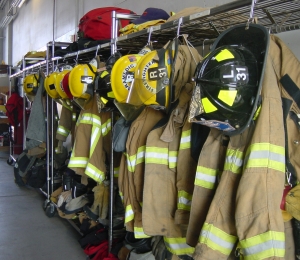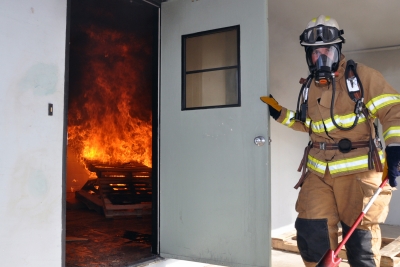August Issue No. 3 – When Disaster Strikes
We can only speculate on what led to the tragic explosion of Ruihai Logistics’ warehouse in Tianjin, China on August 12. The explosion resulted in the deaths of over 50 people and injured more than 700. As the world waits to hear what caused the tragedy, this article does not point fingers; instead it discusses actions that might have prevented the explosion from happening, and procedures that could have minimized the catastrophe.
The Facts
Some key facts leading up to the explosions:
- The first firefighters arrived on scene at 23:06 local time responding to containers on fire. The second team of firefighters arrived at 23:16, fourteen minutes before the first explosion.
- 12 firefighters are confirmed dead and 36 are still missing.
- The explosion site was not a manufacturing facility. Potential causes include improper labeling of hazardous chemicals and improper storage/handling of hazardous chemicals.
An Effective Safety Program
Prevention is critical to fostering a safe working environment. Often, by the time an incident has occurred it is too late to react (although knowing how to react is also critical). To prevent incidents from occurring in the first place, companies must implement an effective safety program. Use the following steps as a guideline to develop your safety program.
- Designate a team to establish a safety program that includes chemical storage and handling procedures, fire procedures, and emergency response plans. Ideally, the team will create practice scenarios with which their program can be tested.
- Routinely perform chemical inventory counts by quantity, type, and location
- Integrate inventory software with your purchasing system (anytime a new purchase is made, the inventory should reflect that order)
- Ensure that chemicals can be tracked when moving around a facility
- Emphasize the importance of labeling. Putting someone responsible as a gatekeeper can help accountability.
Following these guidelines will help companies prevent incidents from occurring. However, despite implementation of these guidelines, accidents do happen. Knowing how to react when an accident occurs is critical to minimizing the damage.
A similar Case in the US
On April 17, 2013, a fertilizer plant caught fire in West, Texas, USA. First response firefighters arrived at the scene, unaware that ammonium nitrate, a potentially explosive chemical, was stored within the plant. Tragically, 10 firefighters lost their lives as the fertilizer plant exploded. Further investigation found that the firefighters did not know how to respond to the fire because the fertilizer company, West Fertilizer Co., and local emergency response authorities did not properly communicate the presence of such a dangerous chemical.
Companies storing hazardous chemicals and local emergency response authorities greatly benefit from utilizing a centralized system of communication. By being on the same page in the event of an emergency, first response teams can easily determine whether or not hazardous materials are on site, and if so, how to handle the situation safely. Quantum’s Firefighter Right to Know module was purchased by the City of Ann Arbor, for this purpose.
These principles can be applied to the Ruihai Logistics incident, and may have prevented or minimized the catastrophe in Tianjin. Understanding what went wrong is the beginning of understanding how to improve.
CONTACT US
Workplace safety was compromised on two separate occasions August 12, 2015. The two incidents occurred at a warehouse in Tianjin, China, and at a recycling center in Spokane, Washington.
The exact cause of the chemical explosion in China is currently under investigation, but so far, there are over 100 fatalities and more than 700 injured. For information on the Tianjin warehouse explosion, read more here.
The other incident occurred when a 55-gallon canister of chlorine gas was punctured at Pacific Steel and Recycling’s site in Spokane, Washington. A chlorine gas cloud was released into the air, immediately overcoming eight workers in close vicinity to the canister. Approximately 50 workers were on scene at the time of the incident. Most were treated on site, although 13 workers were transferred to hospitals for further evaluation with eight listed in critical condition.
Exposure to chlorine gas can cause symptoms which range from minor respiratory issues such as coughing to much more severe respiratory issues. Exposure may also result in burns to the skin and eyes. Firefighters arrived on scene before hazmat teams arrived. Upon arriving, Assistant Fire Chief Brian Schaeffer was unaware of the root cause of the incident and what caused the employees to be sick. It was determined that workers inside the recycling center needed immediate rescue, so commanders ordered firefighters to enter the facility. Thankfully, there were no reports of injuries to the firefighters.
Unfortunately, first responders don’t always walk away from the scene of a workplace incident. In April 2013, a fertilizer plant explosion in Texas killed 10 first responders and the explosion in Tianjin killed 12 firefighters with many more still missing.
The bravery and heroism that first response teams demonstrate is nothing less than awe-inspiring. When an accident occurs and jeopardizes workplace safety, they are the contingency plan. Transparent communication between businesses working with hazardous chemicals and local emergency response authorities, leads to first response teams knowing how to handle incidents in a safe manner. Clearly communicating potential hazards is essential to minimize both worker and first responder injuries. Implementing an effective safety program by utilizing a centralized system such as safety software, can greatly improve safety culture within an organization.
Citations can carry a serious penalty, and so business owners must be aware of the changes to citation guidelines that OSHA has provided. However, before you can understand the changes to citation rules under the new HCS, you must first know the general inspection practices. Being aware of the overall structure of OSHA regulatory inspections will give you an idea of what you should be doing to meet full compliance, whereas focusing only on the citation guidelines will tell you specific incidences to avoid rather than looking to the process in a more holistic way.
First of all, every measure of compliance must be accurate as per the GHS revision 3, as released in 2009. More recent versions have been released, but OSHA standards must be met before UN GHS ones and so it is best to double-check against the US’s hazard communication standards if you are interested in reporting your chemicals as per GHS revision 4 or later. There are a few major differences between versions 3 and 4; minor differences occur as well but do not warrant any citations. Official versions of the different GHS revisions can be found online at http://www.unece.org/trans/danger/danger.html and can be compared to official HCS regulations as found on OSHA’s website. You’ll need to pay close attention to the differences – some small changes in wording (“should” vs. “shall,” etc.) can be cause for citation.
A Certified Safety & Health Official (CSHO) will conduct your inspection, following many specific guidelines as per inspection procedures as of July 9th, 2015. During the transition period between HCS 1994 and HCS 2012, any violations under either or both will be written up during inspection. The citation process for incorrect or missing labels is similar under both HCSs 1994 and 2012, but the official language varies slightly.
The CSHO may also issue a FTA (Failure to Abate) citation if your company had previously received a citation for a specific issue under HCS 1994 and not sufficiently addressed that problem. However, if the guidelines have shifted under HCS 2012, the language of that FTA may have to change slightly in nature and so your company will need to make changes accordingly.
Overall, the best way to avoid any confusion during a transition period like this is to assure that your company’s practices are compliant with both the HCS 1994 and the HCS 2012. Though you may be able to make a case for yourself if your practices match up with one but not the other, it is more likely that you will find yourself facing a citation and have to face repercussions. Familiarizing yourself with the new Hazard Communication Standard and refreshing your mind on the guidelines of the 1994 version are therefore both essential to maintaining good business practices, both for the safety of your workers and the regulatory status of your company.
Awareness for stronger chemical safeguards has been a priority since a fertilizer facility exploded on April 17, 2013 in West, Texas. An accident that could have been prevented resulted in the death of 15 people, including 10 who were first responders. The accident was due to the lack of awareness of the vast amount of ammonium nitrate that was stored at the facility. Though congress passed a law nearly three decades ago to ensure that local communities are fully aware of the hazardous substances, the truth is, many areas in the country are still unaware and unprepared to deal with such catastrophic emergencies.
According to ChemicalHazards in Your Backyard, six states were tested in regards to chemical reporting to the Environmental Protection Agency (EPA). Across the six states (Illinois, Indiana, Iowa, Michigan, Minnesota, and Wisconsin), 1,724 facilities stored over 600 million pounds of unreported hazardous chemicals. Although these chemicals are highly toxic, flammable, and/or explosive, they are not on the EPA’s Risk Management Program list. Therefore they were not required to be reported. In the West, Texas, ammonia nitrate was not mentioned because it was not on the EPA list.
In the two years since the explosion, companies have been encouraged to switch to safer chemicals to reduce risks for workers and nearby residents. It is important for companies to be more transparent about their chemicals and that failing to disclose such information could potentially put lives in danger, which was the case in West, Texas.




